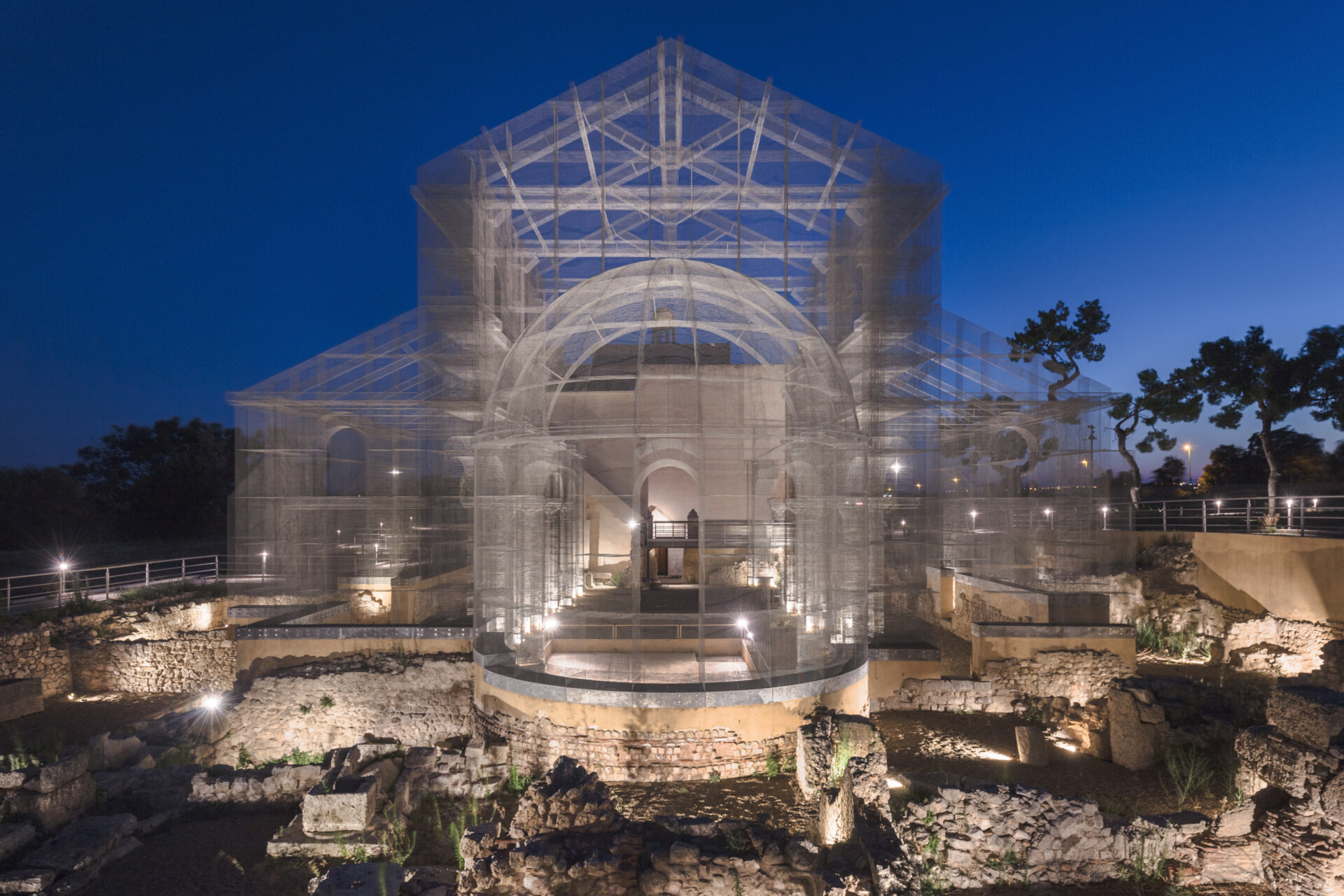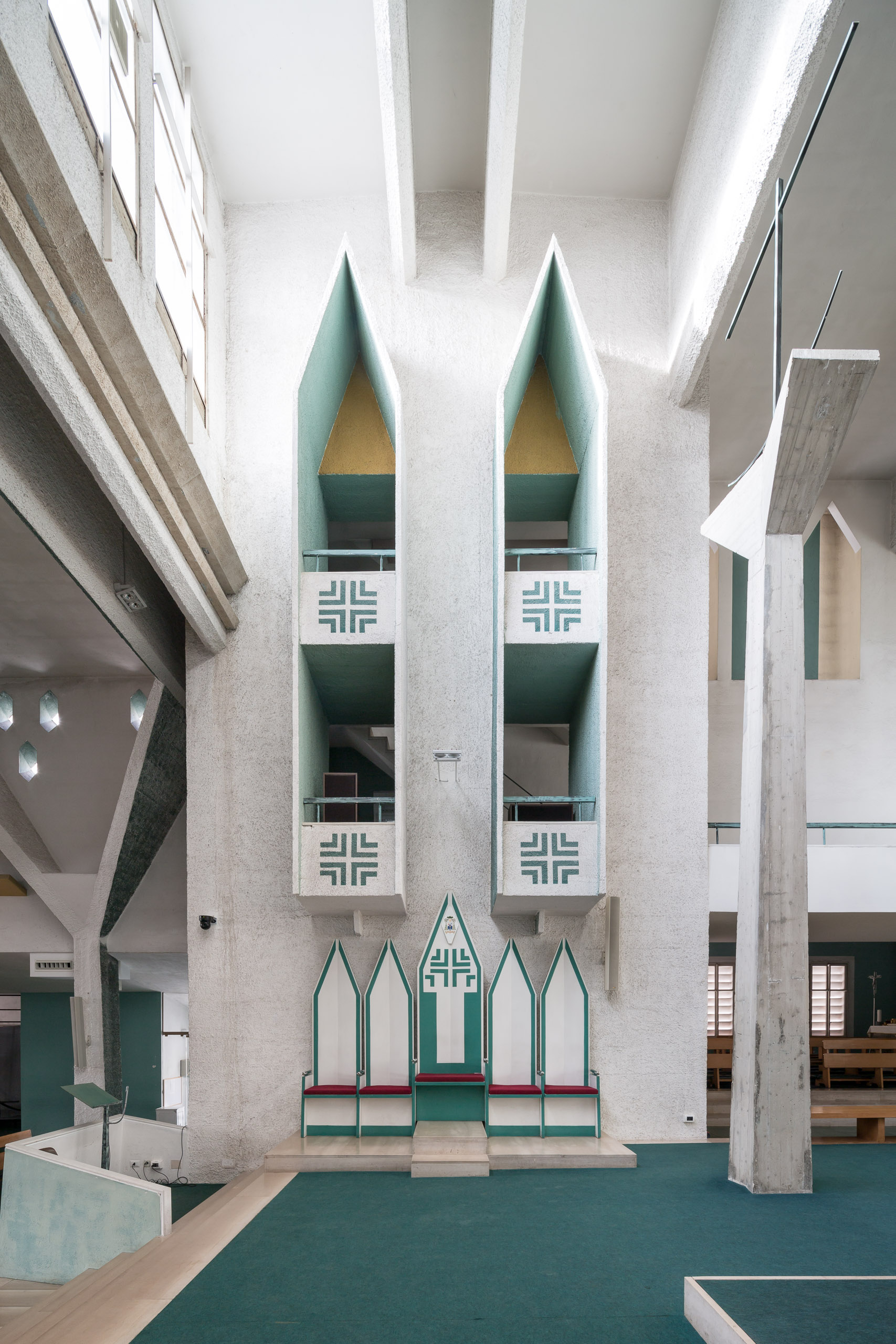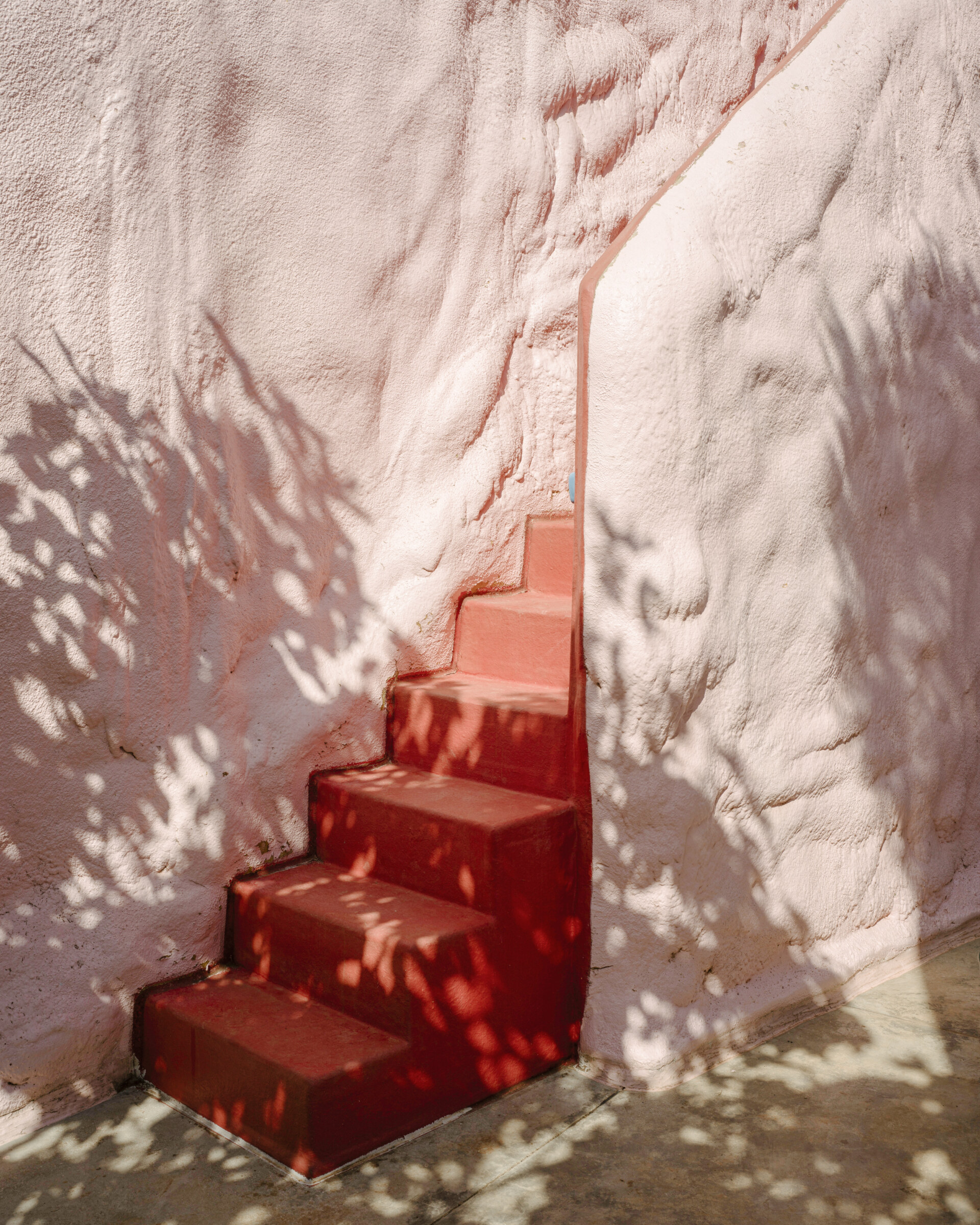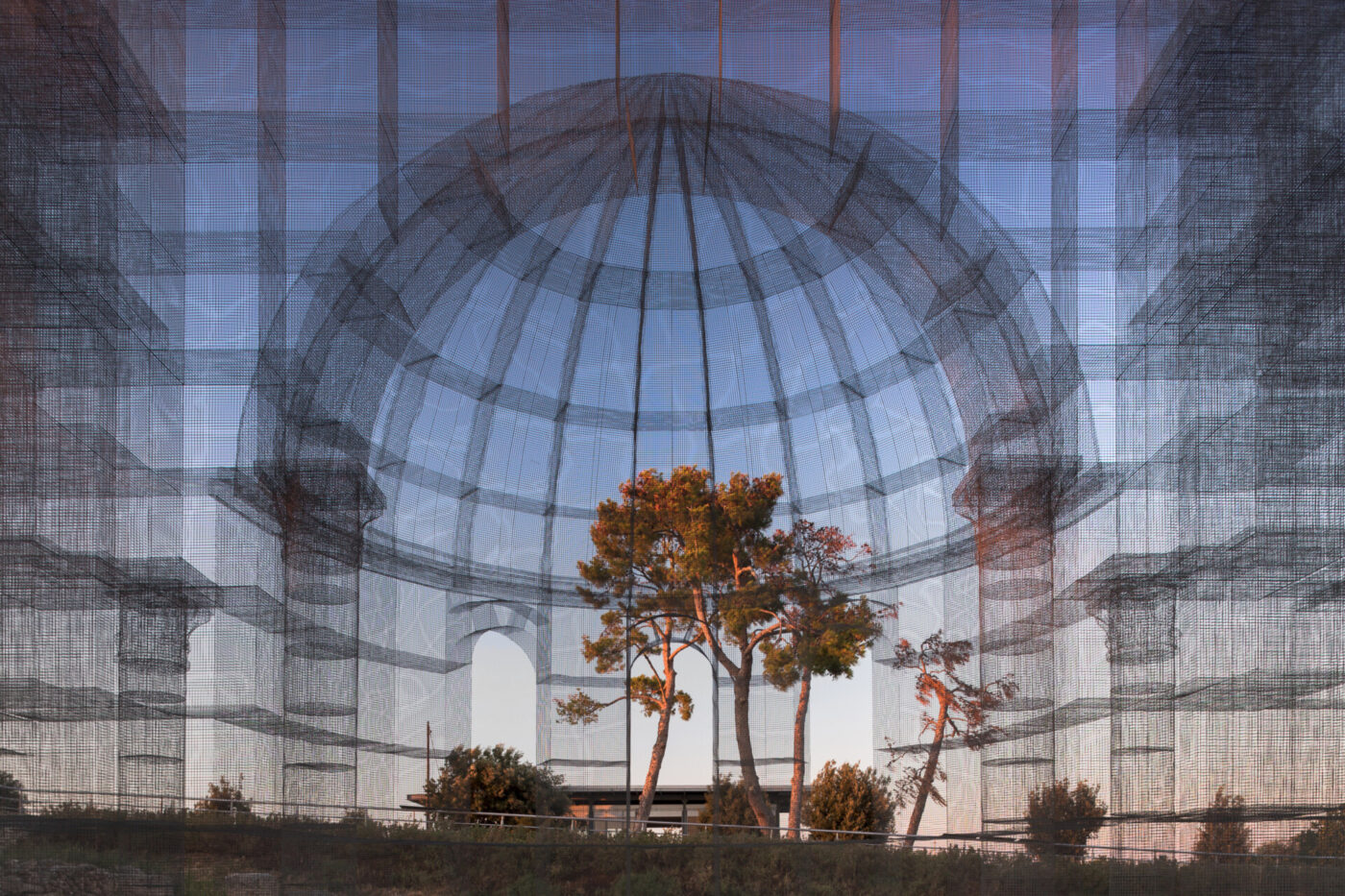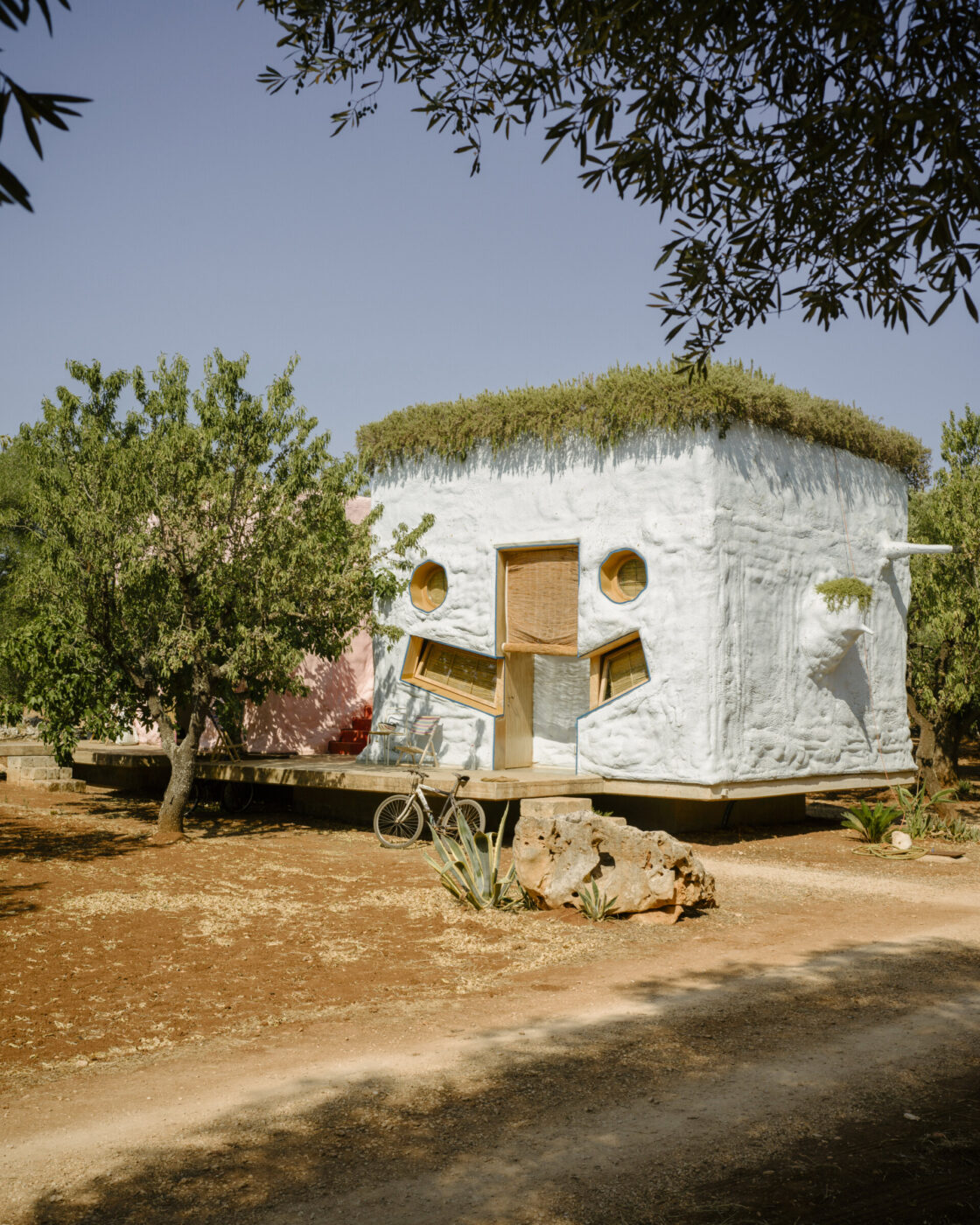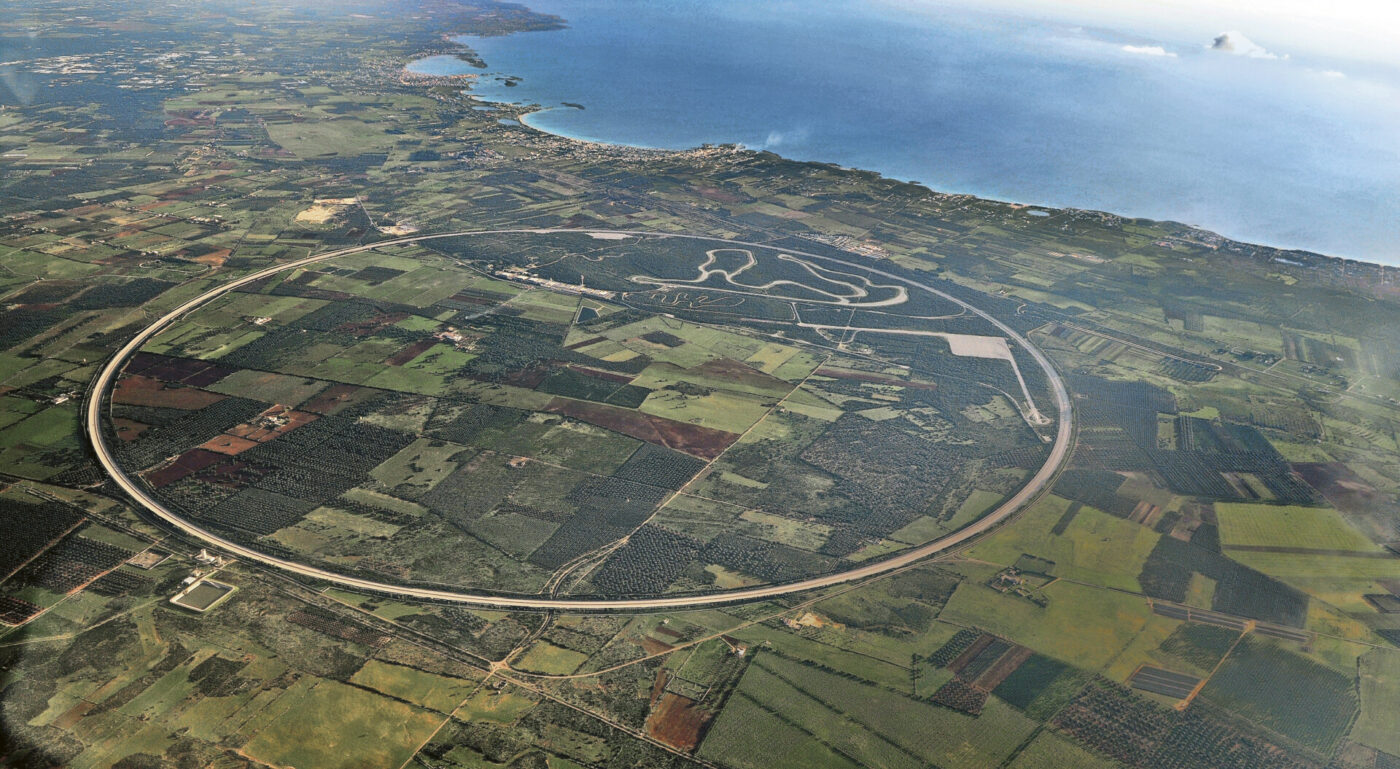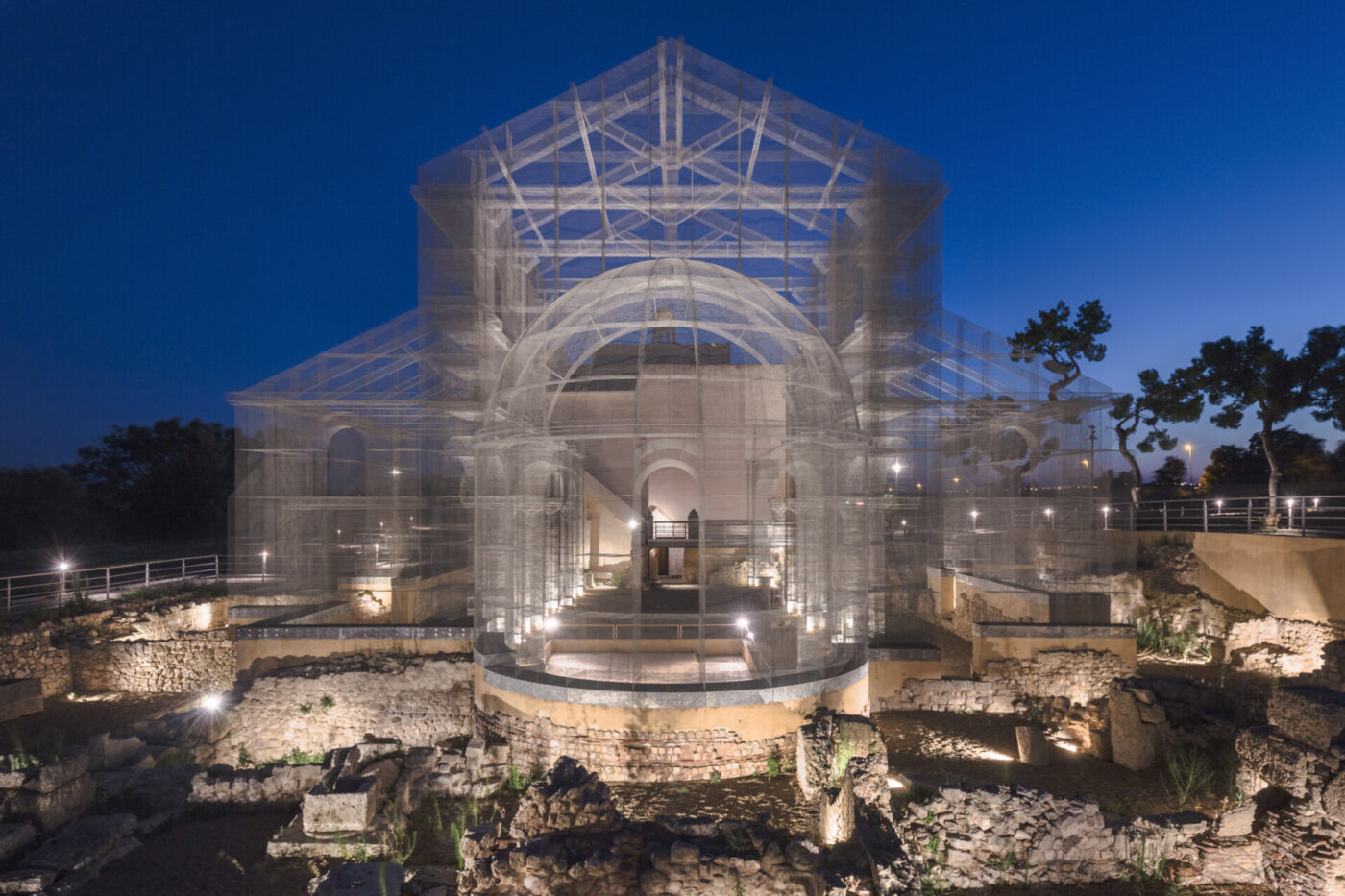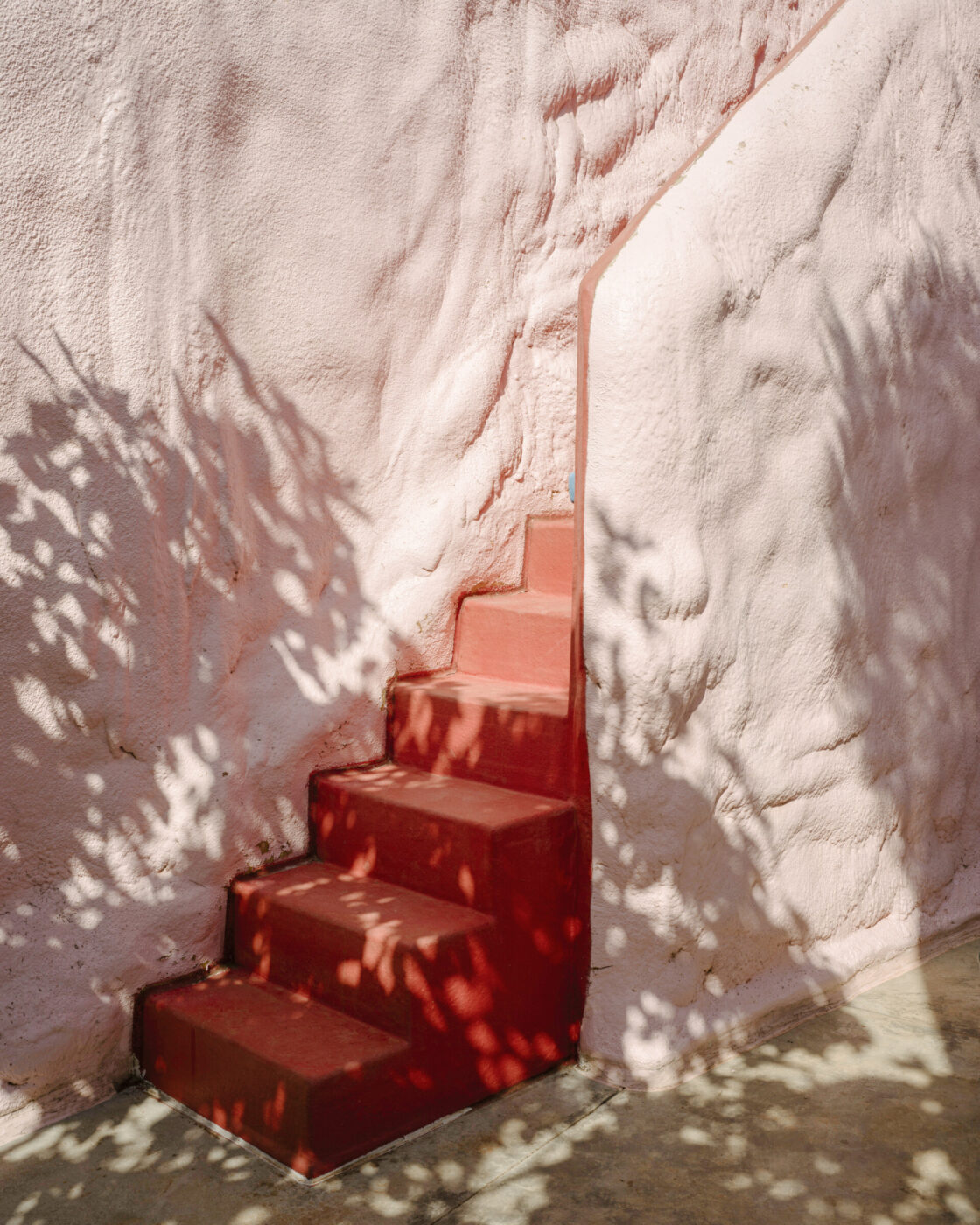Don’t be like everybody else heading to Polignano a Mare and Alberobello… unless you want the crowds to push you to the edges of your sanity. Instead, check out these 10 under-the-radar Puglian places; from cathedrals designed by modern and contemporary architects to a ghost town and a high-speed test track, this is where to find the eccentric side of Puglia you never knew existed. (Also check out “Patience is an Art Form in Puglia” for three more artistic hotspots well worth a visit.)
Castel del Monte (Andria)
Pull out your wallet and fish around for a 1 euro cent coin. Flip it over and you’ll find an engraving of this very Puglian castle. Constructed in 1240 by the order of Frederick II of Swabia, Emperor of the Holy Roman Empire and King of Sicily, the Castel del Monte’s design revolves around the magic number eight: the octagonal structure features eight octagonal towers at each corner and eight trapezoidal rooms on each floor. Legend has it that there was once an octagonal marble basin in the courtyard, meant to represent the Holy Grail. Some scholars believe the octagon, an uncommon choice, was a symbolic geometric shape bridging the square, representing the earth, and the circle, symbolizing the infinite sky. (Theories suggest Frederick’s inspiration came from the Dome of the Rock in Jerusalem, which he encountered during the Sixth Crusade, or the Palatine Chapel in Aachen.) The entire structure is infused with potent astrological symbols and was designed so that, on solstice and equinox days, shadows would be cast in particular shapes and directions.
Though it was a feat of medieval architecture–with design elements from Northern Europe, the Middle East and the classical Hellenic period–the castle was abandoned just a few years later, becoming a prison and a point of shelter for shepherds and bandits. In 1876, it was purchased by the Italian state and restored to (a fraction of) its original glory. You can now visit, or catch glimpses of the stately citadel in the 2016 make of Wonder Woman with Gal Gadot.
The Castel del Monte is open everyday for ticketed entry. Hours change depending on the season: from April to September, it’s open 10 AM to 6:45 PM; from October to March, you can visit from 9 AM to 5:45 PM.
Basilica of Siponto by Edoardo Tresoldi
Odds are you’ve never seen a Paleochristian basilica made out of wire mesh before. This church, designed by young Milanese artist Edoardo Tresoldi, can be found in the archaeological park of Siponto in the province of Foggia. In homage to the ancient basilica that once stood on this very spot, Tresoldi has reconstructed it in both size and stature–the 14-meter-high structure weighs 7 tons and is made up of 4,500-meters-squares of electro-welded mesh wire. It forms a fascinating contrast with the adjacent Santa Maria Maggiore, built in 1977. The whole thing is ethereal, ghostly, and astoundingly cool–a great example of how to find balance between the modern and the ancient.
Other works by Tresoldi can be found across Italy, from Sacral at MAR in Ravenna to the Opera in Reggio Calabria.
Ticketed entry to the Siponto Archaeological Park is open Wednesday to Sunday, and hours change for the season. From April to September, visit 10:30 AM – 7:30 PM. From October to March, visit 9 AM to 6 PM.
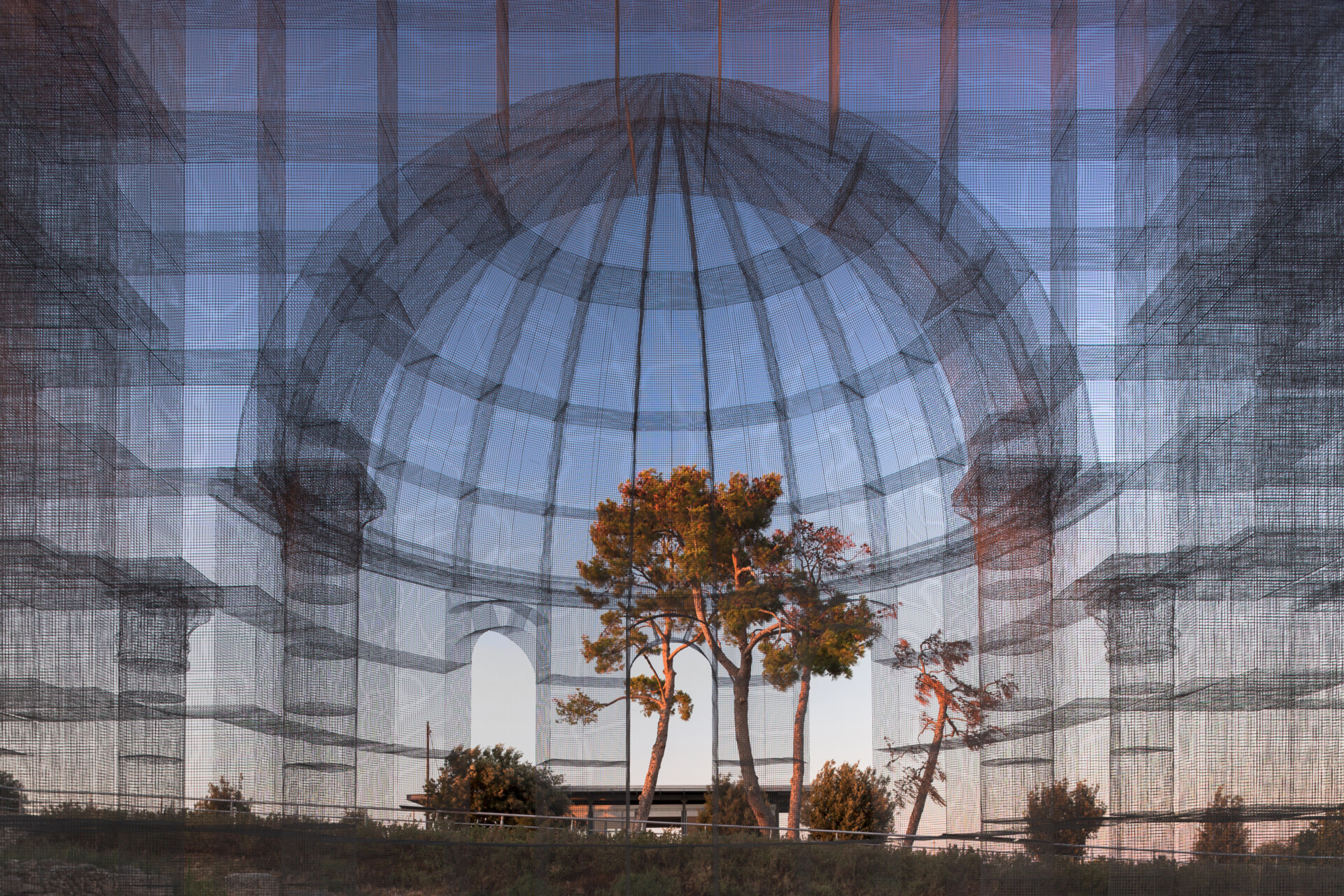
Photography by Roberto Conte, Courtesy of Edoardo Tresoldi
Cathedral of Otranto (Otranto)
The year is 1480, and the Ottomans plan to take over Italy. In July, 128 of their ships land in Otranto–the first move in a bloody attack that sees houses sacked, looted, and set ablaze, 12,000 Pugliese killed, and 5,000 sold into slavery. After 15 days, the Ottomans reach the Cathedral of Otranto, finding inside 813 devout Christians hiding in the nave; their leader is Archbishop Pendinelli, clad in vestments and all. The group is given the option to convert to Islam–all refuse, and the Archbishop is beheaded on the altar and the clergymen sawn in half. Of the others, a tailor by the name of Antonio Primaldo is particularly strong in his conviction, and the Ottomans decide to behead him first. Legend has it that, afterwards, his body rose and stood upright, cemented in place until the last of the victims met their fate. The miracle inspired one of the executioners to switch faith right then and there–though you can imagine what happened to him next.
The cathedral was used briefly as a mosque, and then a stable, before being restored when the the three kings of Naples, Aragon, and Sicily retook southern Italy. The martyrs’ skulls were collected and are now housed in the reliquary. In 1711, an additional chapel, in honor of the group, was erected adjacent to the primary cathedral. Encased in glass behind the altar are some of their skeletal remains, as is the “martyrdom stone”, believed to be the spot of the Christians’ execution. Also of note is the floor’s 12th-century mosaic, a bizarre, sprawling depiction of the tree of life that a New York Times article once said “looks like the work of someone tripping on acid.”
The Cathedral of Otranto is open daily from 8 AM to 12 PM and 3 PM to 7:15 PM.
Il Pescetrullo (Carovigno)
Another stunner by one of Italy’s greatest designers, the Pescetrullo is no average trullo. Commissioned by Caterina Tognon, owner of an eponymous art gallery in Venice, and her husband, architect Gabiele Pimpini, this pair of structures was built by none other than iconic Italian designer Gaetano Pesce, who, with a dose of his distinctive self-irony, named the project Pescetrullo. “The house is perhaps the portrait of the Venetian couple who commissioned me to do this project and wants to remember their appearance,” wrote Pesce, and we can totally see how the trulli–one pastel pink and one baby blue–recall smiling faces, with the entrances as noses and the portholes as eyes. The designer achieved the buildings’ anomalous shapes with polyurethane foam, which he lauded for being waterproof and insulating, and taking just a day to solidify. The blue is used for sleeping and the pink for living–it’s full of benches and hammocks–while two other small structures contain the toilets and are completely covered in small mirrors, reflecting the olive groves which surround the estate.
Pescetrullo is a private house and is not open to visitors. Occasionally, it’s available for rent; you can find further details here.
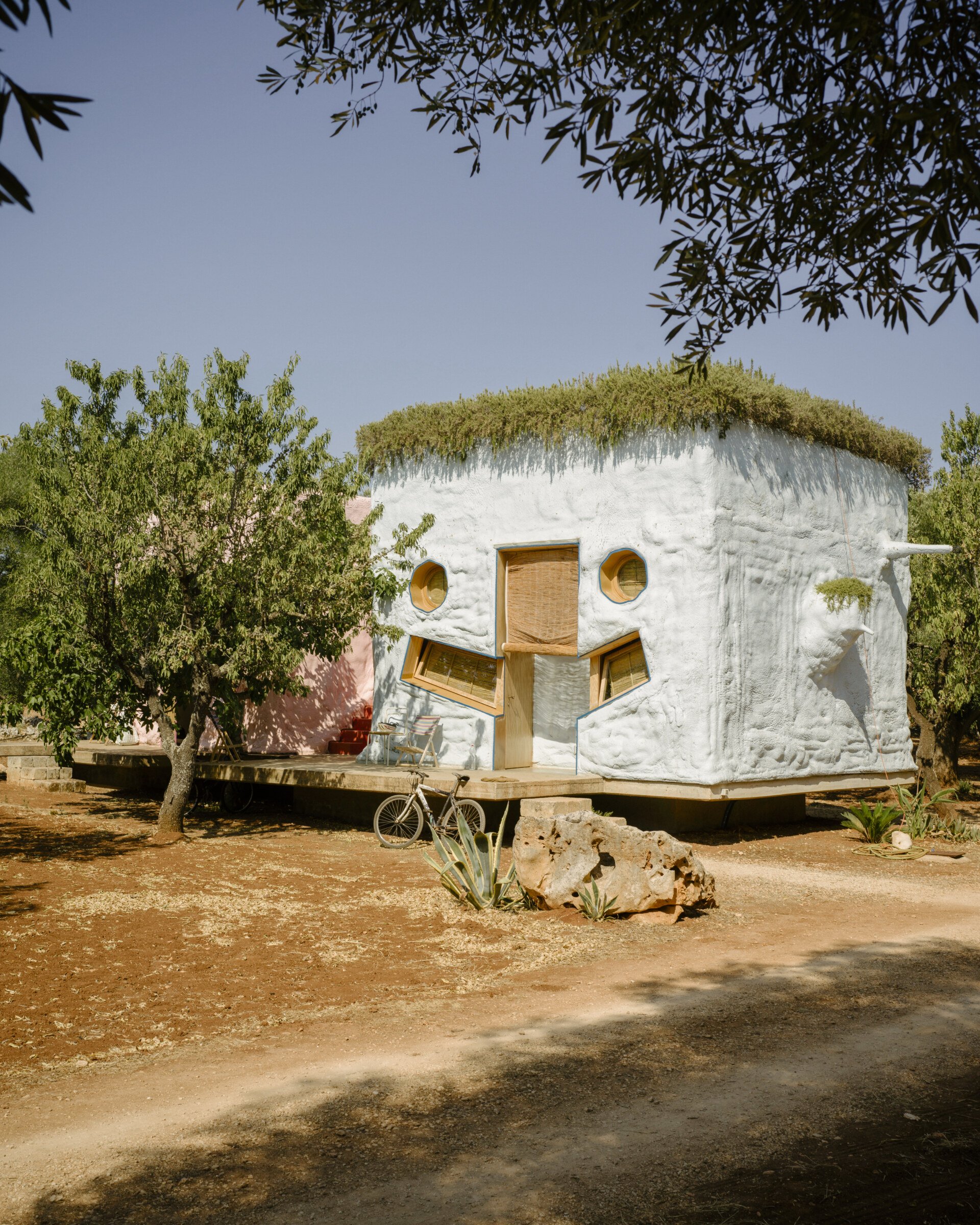
Photography by M. di Battista
The Grotto Church of Saint Michael (Gargano)
Another cavernous attraction, this sanctuary, dedicated to Saint Michael the Archangel, can be found within a natural limestone cave on the side of a mountain near Lake Varano (another great spot to check out in Gargano, Italy’s “spur”). It’s not often that you find frescoes side by side with overgrown moss, stalactites, and stalagmites. Don’t leave, however, without checking out the basin behind the altar; this naturally-formed fountain fills with rainwater that drips from the ceiling, with locals claiming that the water is sacred and can miraculously heal. Visitors–even atheist ones–claim to feel a deep sense of spirituality here, and clearly many before them have agreed. Artifacts unearthed here point to the site being used as a place of worship since the Paleolithic era, and it’s thought that pagan cults practiced here until the Middle Ages. Note that there’s another church with a similar name in the nearby Monte Sant’Angelo–also impressive, but not the one we’re talking about here.
Once you find the car park, head down the little path to the church, marked by an arch and a state of the Archangel.
Nardò Ring (Nardò)
Speed freaks, listen up. Your holy grail might just be here in Nardò, Puglia. A 7.8-mile (12.5 km) circular test track, the Nardò Ring is designed with banked lanes so that cars and motorcycles can be tested at “neutral speeds”. This means that drivers can whizz around the massive circle without steering, in essence driving in a straight line. The outermost lane, Lane 4, reaches this equilibrium at a whopping 149 mph (240 km/h). Many a record has been beaten here, the most recent of which, in 2023, saw a Triumph Tiger Explorer 1200 GT, driven by Spanish racer Iván Cervantes, cover 4,012.53 km (2,493.28 mi) in 24 hours to claim “The greatest distance on a motorcycle in 24 hours.” (Kids, don’t try this at home.)
Built in 1975, the track was originally called the Pista di prova di Nardò della Fiat–used by the eponymous Italian car brand for testing–before being purchased by Porsche Engineering in 2012. The ring is so large that it’s been photographed from space multiple times–we’d like to bet they were traveling at speeds even faster than those recorded at Nardò. Today, the land within the circuit is primarily farmland, with farmers reaching their fields via a series of underpasses beneath the track.
The proving ground is only open to the Porsche Group and its clients; if you’re unable to visit, you can get a sense of the track from its cameos in British TV series Top Gear.
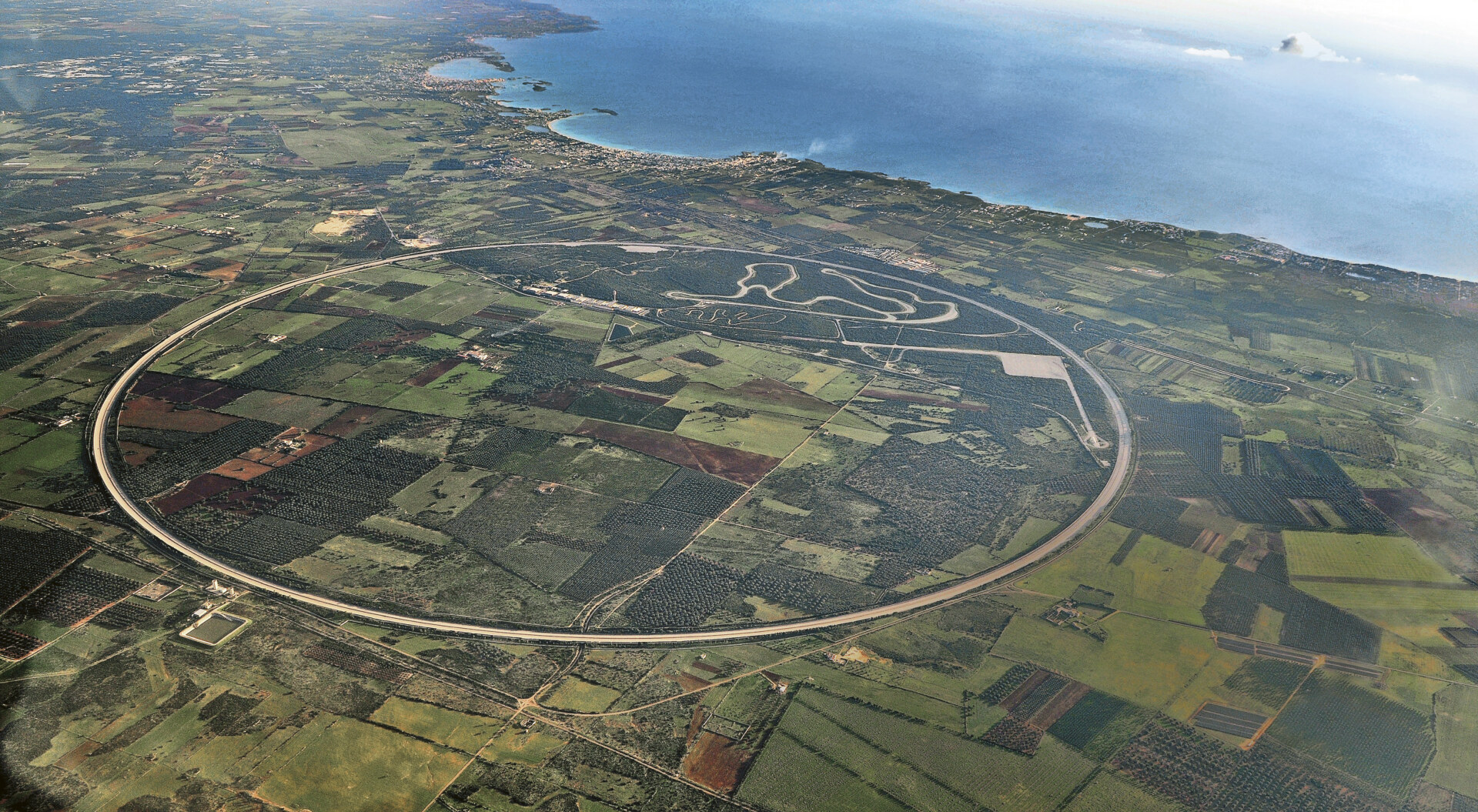
Nardò Technical Center Proving Ground, Courtesy of Nardò Technical Center
Museo Faggiano (Lecce)
Luciano Faggiano really just wanted his toilet to work. He and his three sons were working on their dream trattoria, and a broken sewage pipe was all that stood between them and a working establishment. For seven years they searched for the leak and, in the process, excavated 5,000 archeological treasures. (They also fixed the pipe–huzzah!) A fake floor led to medieval stones, which, in turn, led to a Messapian tomb, remains of a Franciscan chapel, inscriptions from the Knights Templar, an antique Jesuit ring embellished with Christian symbols, and a Roman grain storage facility–you can now see all this and more at Museo Faggiano, Lecce’s only independent museum. Spiral staircases and glass floors allow you to explore the bowels below the building, a veritable menagerie of finds from the region’s layers and layers of history.
Museo Faggiano is open 7 days a week, from 9:30 AM to 8 PM, with a €5 ticket.
Great Mother of God Co-cathedral (Taranto)
We know and love Gio Ponti for his groundbreaking furniture pieces like the D5551 Side Table and Sedia di Poco Sedile, as well as the towers and palaces he’s designed from Italy’s tip to toe; here’s another reason to add to your list. Though Taranto’s glory days may be behind it–or in front of it, depending on who you ask–it’s here that you can find one of the architect-designer’s masterpieces. The father of 20th-century Italian modernism was a devout man, and when Taranto’s local archbishop offered him the job of building the city’s new cathedral, Ponti jumped at the chance. It was the 1960s, Taranto was in its industrial heyday, and the archbishop wanted a church to service the new Città Nuova, which was rapidly developing in the southeast. Between 1964 and 1967, Ponti designed what Domus calls “his most complex and original plan,” inspired by Taranto’s nautical surrounds. The crossing is meant to be a sail, three pools symbolize the ocean out front, and sea-green tiles inside feel fittingly aquatic. The architect’s idea was for the cathedral to be surrounded by gardens and groves, to soften the church’s harsh lines and stark appearance. These plans never came to fruition, and today the Great Mother of God Co-cathedral is flanked by 1970s-style block housing. That said, numerous plans have been put forth to restore the site, making this capolavoro, and Taranto, a place to keep an eye on.
The Great Mother of God Co-cathedral is open Monday through Saturday from 7 AM to 12 PM and 4:30 PM to 8 PM, and Sunday from 7:30 AM to 12:30 PM and 4:30 PM to 8 PM.

Co-Cathedral Gran Madre di Dio
Monteruga
Dystopia Monteruga certainly feels like. For those of you who are drawn to the spooky and the scary, this Fascist-era ghost town in Salento is a must. Expanding around a farm of the same name, Monteruga once counted 800 residents, primarily agricultural workers, who were serviced by a school, church, post office, oil mill, tobacco shop, winery, and more. As WWII passed, farms were privatized, and urbanization kicked in, the population slowly, slowly declined until it was completely deserted in the 80s. The spot became a favorite for satanic cults, and it’s said that the darkest of rites and rituals were carried out inside the deconsecrated church. Eerie details of the town’s former life remain today. At the school, blackboards bear chalk scribbles from the 40s, some clothes are left in the old houses, and the winery’s walls are still marked by an epitaph meant to inspire its workers: “He who drinks wine lives longer than the doctor who forbids it.” Nature has taken its course here, not only on the buildings (many of which are not safe to enter), but on the central piazza, now blanketed in grass and wildflowers and populated by horses, rabbits, goats, chickens, dogs, cats, and even peacocks.
Recently, an Italian entrepreneur purchased the town–for what purpose, we’re yet to find out–and has left it under the custody of a guard, who lives in one of the now-restored houses. Whip out your lei’s and grazie’s, and you may be granted access to Monteruga by the guard, who, if you’re lucky, will regale you with even more secrets and legends.
Castellana Caves
This is where you’ll find the Pantheon of Puglia–if the Pantheon was a subterranean network of caves and tunnels spanning more than three kilometers. It’s thought that the karst cave system formed 100 million years ago, when the land that now forms Italy’s heel started to emerge–in other words, it’s been around since before Puglia was Puglia. The main cave is the real stunner and the aforementioned “Pantheon”: 100 meters long, 52 meters wide, and 61 meters deep, La Grave, as it’s known, features a large hole in the ceiling, allowing sunlight to illuminate the walls and stalagmites in a rainbow of colors. One magnificent group of stalagmites here is named the Cyclopes for its resemblance to a group of sea giants surfacing from a stormy sea. Other caves of note include the Black Cavern (Caverna Nera), Precipice Cavern (Caverna del Precipizio), and White Cave (Grotta Bianca), the latter of which is made up of white alabaster; chock-full of stalagmites, stalactites, and crystals; and supported by two massive columns.
The Castellana Caves are open year-round, except on Christmas and the New Year’s. You’ll have to book a guided tour; tour schedules vary by season.
BONUS
You most likely have heard of this place, though we’d bet most of you didn’t know it can be found in Puglia. In No Time To Die (2021), we see our trusty Bond, James Bond, get ambushed on this two-tier Roman bridge, which the movie will have you think is in Basilicata’s Matera, but, in reality, is 30 kilometers north and across the regional border line.
Ponte Acquedotto (Gravina in Puglia)
This 37-meter-tall and 90-meter-long bridge serves as the sole link between the city center of Gravina and the rock-cut churches on the ravine’s eastern side. Thought to have been inhabited since the Paleothic era, before becoming a Greek and then Roman city, Gravina hangs above a canyon through which a little river runs. The first iteration of this bridge collapsed after an earthquake in 1722, to be rebuilt in the following years with the addition of the aqueduct to bring water to the town from the rich springs on the other side of the ravine. Walk over the bridge for pretty spectacular views of it all: the town, the ravine, and the religious sites.
